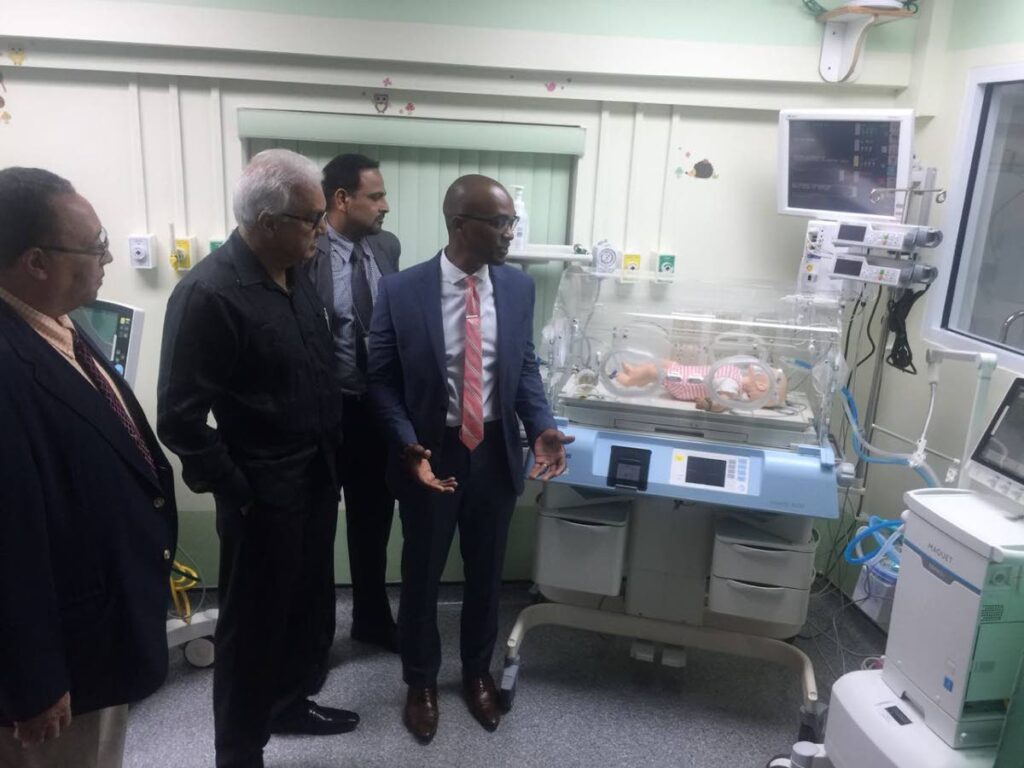Protocols for transferring newborns with sepsis to NICU in Trinidad and Tobago

A national neonatal transfer protocol was implemented in Trinidad and Tobago in 2020 by the Health Ministry’s directorate of women’s health.
The policy came three years after the creation of the National Neonatal Committee, which assists the Maternal, Neonatal and Child Health Committee “in advancing this nation’s agenda of neonatal and perinatal health, in keeping with the sustainable developmental goal targets for 2030 and the sustainable health agenda for the Americas.”
In the recent incident at the Port of Spain General Hospital’s Neonatal Intensive Care Unit (NICU), seven babies died from late-onset neonatal sepsis following a bacterial outbreak between April 4 and 9.
The Pan American Health Organization's (PAHO) website says sepsis is a complication that arises "when the human body mounts an indiscriminate, and overt, response to an infection."
It adds that this is a medical emergency which can lead to irreversible tissue damage, septic shock, multiple organ failure and death.
Lab tests found three main types of bacteria –Serratia Marcescens, ESBL Klebsiella pneumoniae, and Klebsiella aerogenes – at the NICU.
In a press release on April 11, the North West Regional Health Authority (NWRHA) said the deaths happened between April 4 and 9, during which it "observed a rapid deterioration in several neonates."
The families of the babies have since taken legal action, and investigations are under way.
Four other babies died between February and March, but the NWRHA said on April 19 that those deaths were not connected to the bacterial outbreak.
It said the unit is "operating in accordance with established standards."
The national neonatal transfer protocol outlines that neonates (newborns) suspected of having sepsis or as confirmed to have it must be transferred to the NICU by a paediatrician who should indicate what antibiotics and doses of same were administered.
It adds that if blood cultures were taken, the referring paediatrician or team should provide contact details for the laboratory where the sample is being processed, or bring the specimens to the NICU.
In addition to this, the staff members accepting those babies must wear the appropriate level of PPE as outlined in the ministry’s Manual of Infection Prevention and Control Policies and Guidelines.
That guideline says proper PPE includes gloves, gowns, waterproof aprons, goggles or facial shields (eye, nose, mouth protection), and masks and respirators with particle filters (nasal and mouth protection).
The national neonatal transfer policy adds, “Transfer of patients with contagious or viral diseases of unknown transmissibility from newborns to adults must be done in a transport incubator with the minimal standards as indicated in this document. This applies to all SARS-CoV-2 (covid19) positive neonates, infants born to suspected or confirmed SARS-CoV-2 positive mothers.”
The accounts given by parents of babies who died at the NICU, in legal letters to the NWRHA, claim the authority failed to provide a clean, safe and sanitised environment and failed to take the necessary steps to ensure the unit was bacteria-free, knowing that only high-risk babies were admitted there.
The TT National Nursing Association has since issued a press release on the incident saying the deaths were predictable, as it did not believe the "rigorous standards" set up to ensure there were fewer deaths per 1,000 live births than the global benchmark (12) had been sustained.
On April 18, the Prime Minister asked the nation for patience as investigators from the Pan American Health Organisation (PAHO) gather a three-man team to investigate.
He said, “I want to know what are the facts and circumstances. And if there are people to be held accountable, then they are to be held accountable after the facts are determined. There is no short-cutting that."
About the bacteria
The US Centers for Disease Control and Prevention (CDC) describes Serratia Marcescens as an “environmental gram-negative bacterium that causes invasive disease in rare cases.”
Gram-negative, according to the CDC, means resistant to multiple drugs and increasingly resistant to most available antibiotics.
As for Klebsiella, the CDC says it is another type of gram-negative bacterium “that can cause different types of healthcare-associated infections, including pneumonia, bloodstream infections, wound or surgical site infections and meningitis.”
ESBL or Extended Spectrum Beta-Lactamase are enzymes that break down and destroy some commonly used antibiotics.
Klebsiella aerogenes, formerly called enterobacter aerogenes, is also gram-negative and can cause respiratory, wound and urinary tract infections.


Comments
"Protocols for transferring newborns with sepsis to NICU in Trinidad and Tobago"